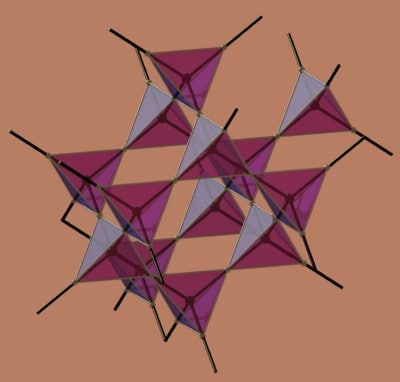
Particles carrying isolated north or south magnetic poles, otherwise known as magnetic monopoles, are often conjured in theory but have never been seen in experiment. Now, physicists in the US, UK and Germany say that such monopoles should exist in exotic magnetic materials called “spin ices”. Although direct applications are still a way off, learning how to move these monopoles might lead to magnetic analogues of electric circuits for making high-density magnetic memories.
Magnets always have a north and a south pole. Break one in two, and a north and south pole spontaneously form to create two new magnetic dipoles — a phenomenon that extends right down to the subatomic level. But electric fields can originate from a single pole, so why shouldn’t magnetic monopoles be isolated too?
As far back as 1931 Paul Dirac suggested that magnetic monopoles could explain the yet-unsolved mystery of quantization of electric charge, and some present theories have invoked them in order to unify the electroweak and strong interactions. Unfortunately, the masses of the monopoles in these grand unified theories are too large — about 1016 GeV — to be glimpsed by particle accelerators.
The ice rule
Claudio Castelnovo of Princeton University and colleagues at the Max-Planck Institute for the Physics of Complex Systems and Oxford University think they might be found in spin ices, materials containing an array of magnetic moments or spins arranged on a lattice of tetrahedra (see figure). The spins can point either into or out of the tetrahedra, but always obey the “ice rule” — that is, there must be two pointing in and two out. “This rule is a reference to a precise analogy with the physics of ordinary ice, where electric dipole moments behave in the same way,” team leader Shivaji Sondhi of Princeton told physicsworld.com.
What is special about spin ice, as opposed to all other magnetic materials, is that the ice rule leads to an exponentially large number of ground states, or lowest energy configurations. Normally these configurations consist of closed loops of magnetic moments, but in excited states the loops are broken and the ends behave as independently moving magnetic monopoles (Nature 451 42). “In other magnetic materials, similar incipient particles are bound in pairs, or confined,” said Sondhi.
Unlike free electrical charges, these monopoles have limited movement and so could not be used to produce a steady magnetic current. However, according to a comment article in Nature by Oleg Tchernyshyov of Johns Hopkins University in Baltimore, they could be used to produce an alternating magnetic current. “Learning how to move magnetic monopoles around would be a step towards technologies such as magnetic analogues of electric circuits and magnetic memories operating on the atomic scale,” he says.



